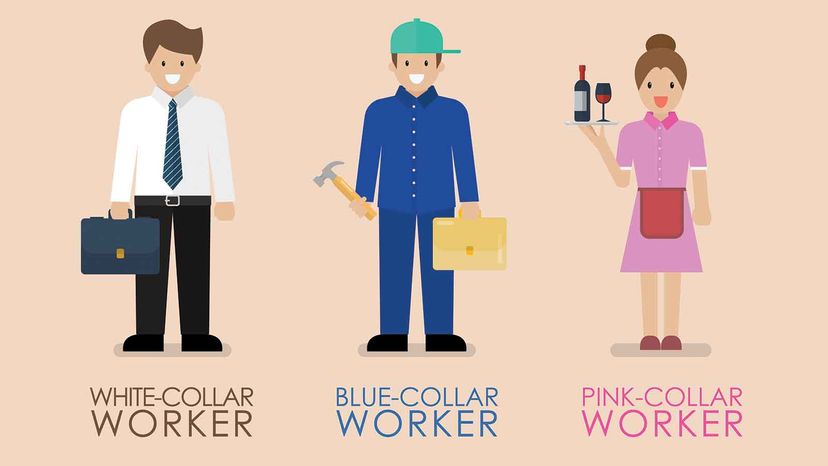The terms "white-collar jobs" and "blue-collar jobs" pop up in discussions about work, the economy, education and class. But why are jobs sorted like loads of laundry by collar colors, especially in a world where a lot of people where t-shirts and hoodies to work, no matter what they do? The answer is about a century old.
Interestingly, white collar was the first to appear, in 1910. A Nebraska newspaper used the term to contrast office workers and farmworkers in the Midwest. Men would often wear clean, starched white-collared shirts to church on Sundays. Who wouldn't, the paper wondered, choose a job where they could wear a white collar to work and remain clean over the dirty, grimy, sweaty physical work of the farmer?
Once white collar entered the language, it didn't take long for its workplace corollary to emerge. Blue collar first appeared in 1924 in a newspaper in Iowa to refer to men working in the trades, such as carpentry. These men didn't really wear blue-collared shirts all that often, but they did wear blue-dyed jeans and overalls to do their jobs. The shirts they wore were usually darker colors to help hide the stains that came with doing their work.















